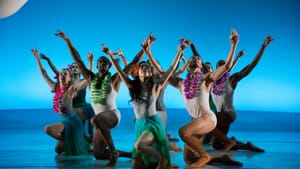Stay in the Loop
BSR publishes on a weekly schedule, with an email newsletter every Wednesday and Thursday morning. There’s no paywall, and subscribing is always free.
BalletX flies high
BalletX presents 'Sunset, o639 Hours'

BalletX is Philadelphia’s premier company for new and exciting modern ballet. They specialize in world premiers, which makes every performance an adventure. I’ve been a fan of the company since they first performed, so I’ve seen everything they’ve done at least once — 11 years of groundbreaking art. Matthew Neenan and Rosie Langabeer’s Sunset, o639 Hours, a full-length, modern-story ballet, is easily the most ambitious, interesting, and moving piece in their repertoire.
A long way from home
The ballet tells the story of the first airmail flight from Auckland, New Zealand, bound for Honolulu, Hawaii on January 2, 1938, and the tragic return flight that ended on January 11, when the plane, piloted by Edwin Musick, exploded off Pago Pago in American Samoa. To bring the story to life, BalletX cofounder (with Christine Cox) and choreographer Neenan collaborated with New Zealand musician and composer Langabeer and lyricist Andrew Mars. Working with traditional instruments and instruments invented for the show by Neil Feather, they created a dance- and sound-scape that evokes a moment in history when daring aviators were testing the boundaries of flight (just six months earlier, Amelia Earhart disappeared during her effort to fly around the world).
Like many in the audience, I had seen Sunset, o639 Hours when it debuted in 2014, and I entered the Wilma Theater with a mix of joy and trepidation. I remembered it as the kind of “I was there when it happened” moment. But would the new production be as good as I remembered, or would my memory be forever tarnished? Happily, it was better.
While the audience entered the theater, Zachary Kapeluck (as Captain Musick) danced alone on a set designed by Maiko Matsushima with large sheets of curled airmail hanging overhead. Gradually the company joined him, dancing slowly with inward gazes, like ghosts going through the motions of their former lives, unseen by the living audience that chatted and shed their coats, as yet unmoved by the tragedy.
Aloha 'Oe
When the lights went down, the story began with the clipper’s flight into Auckland. Its crew celebrated New Year’s Eve in a nightclub with original 1930s-style music performed by Langabeer, Mars and an onstage band. The flight left for Hawaii to a song of farewell sung by the dancers. The diverse cast of dancers seemed to live the choreography, drawing us into the emotional story they told. Kapeluck in particular led the performance with power and dignity.
A dance using modern ballet movement evoked a hula to welcome the crew to Honolulu. It was lovely, but I was most moved when the dancers, aided by that brilliant soundscape, created in dance the airplane itself: The drive of the engines, the turning of the propellers, the sweep and turn in the air, and the birds flying with them, in gauzy dresses. When the plane exploded, pieces of airmail tissue paper fell from the ceiling onto the audience below.
Sunset, o639 Hours integrates original music and spoken word (the musicians were also a nightclub band and Mars wandered through the action singing wistful commentary). A wife danced her loneliness, while her letter to her husband in New Zealand was read aloud. In less deft hands it might have seemed forced, but here all of the pieces fit together effortlessly to bring a moment in history to life.
What, When, Where
Sunset, o639 Hours. By Matthew Neenan and Rosie Langabeer. November 16-20, 2016, BalletX at the Wilma Theater, 265 S. Broad Street, Philadelphia. (215) 546-7824 or balletx.org.
Sign up for our newsletter
All of the week's new articles, all in one place. Sign up for the free weekly BSR newsletters, and don't miss a conversation.
 Camille Bacon-Smith
Camille Bacon-Smith